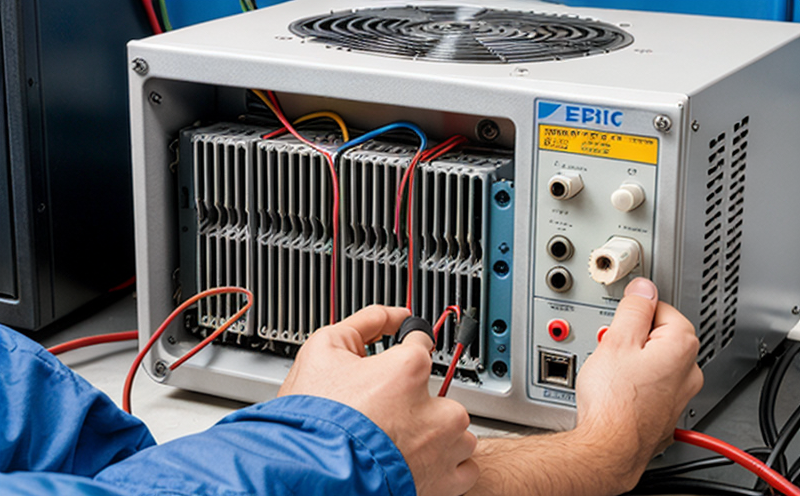IEC 60255 Protective Relay Testing in Marine Applications
The International Electrotechnical Commission (IEC) Standard IEC 60255 provides a comprehensive framework for the testing of protective relays used in marine applications. This standard ensures that protective relays function reliably and accurately under various environmental conditions encountered in maritime environments. Protective relays are critical components designed to detect faults or abnormal operating conditions within electrical power systems on ships, preventing damage to equipment and ensuring safety.
Marine environments present unique challenges due to factors such as saltwater exposure, humidity, vibration, and extreme temperature variations. These conditions can degrade the performance of protective relays over time. IEC 60255 addresses these issues by specifying stringent testing procedures that simulate real-world operating conditions, ensuring that protective relays meet the highest standards of reliability.
The standard covers a wide range of tests including insulation resistance measurement, dielectric strength test, high-temperature storage and operation, low-temperature storage and operation, vibration testing, shock testing, and many other environmental stress tests. Compliance with IEC 60255 is essential for manufacturers aiming to achieve international recognition and compliance in the marine sector.
For R&D engineers working on new designs or modifications of protective relays, adhering to this standard helps ensure compatibility with existing systems and future-proof products against regulatory changes. Compliance also facilitates easier integration into existing vessel electrical networks and enhances overall safety standards aboard ships.
Scope and Methodology
| Test Category | Description | Objective |
|---|---|---|
| Insulation Resistance Measurement | Determining the insulation resistance between conductors and between conductors and ground. | To ensure adequate electrical isolation, preventing unintended short circuits. |
| Dielectric Strength Test | Applying a high voltage to determine if insulation can withstand specified voltages without failure. | To assess the robustness of insulation materials against overvoltages. |
| High-Temperature Storage and Operation | Exposure of relays to elevated temperatures for extended periods followed by functional testing. | To verify reliability under high-temperature conditions typically found in tropical climates or engine rooms. |
| Low-Temperature Storage and Operation | Exposure of relays to low temperatures for extended periods followed by functional testing. | To ensure performance remains consistent even at freezing temperatures. |
| Vibration Testing | Subjecting relays to simulated shipboard vibrations using shakers or similar equipment. | To evaluate the durability and integrity of connections during periods of high mechanical stress. |
| Shock Testing | Simulating impacts that may occur from accidental drops, collisions, etc., ensuring relays remain functional post-impact. | To guarantee operational integrity following unexpected physical stresses. |
Why Choose This Test
Adhering to IEC 60255 ensures that protective relays are robust and dependable in one of the harshest operational environments: marine applications. By following this standard, manufacturers can demonstrate compliance with international regulatory requirements, which is crucial for exporting products globally.
This testing process not only adheres to industry best practices but also sets a benchmark for quality control that goes beyond basic functionality checks. It ensures that every relay meets stringent performance criteria under simulated real-world conditions, thereby enhancing safety and reducing the risk of costly downtime or accidents on ships.
For quality managers responsible for ensuring product reliability and compliance, IEC 60255 offers a clear path to achieving these goals. Compliance with this standard is recognized by global maritime authorities, making it easier for companies to gain market entry into various regions without additional certifications or lengthy approval processes.
Compliance also fosters trust among stakeholders such as insurers and regulatory bodies, who rely on consistent standards when assessing risk profiles associated with different types of equipment. Additionally, R&D engineers benefit from having a standardized framework for development and validation, streamlining the innovation cycle while maintaining high safety standards.
Use Cases and Application Examples
The IEC 60255 standard finds extensive application in various parts of marine vessels where reliable electrical systems are paramount. Key areas include:
- Main engine control panels
- Generator sets
- Navigation and communication equipment
- Critical safety devices like fire detection systems
In these critical systems, protective relays play a vital role in detecting faults early on so that corrective actions can be taken before they escalate into major issues. For instance, during routine maintenance or new installation of electrical components, compliance with IEC 60255 helps ensure that the entire system operates seamlessly under all expected conditions.
An example might involve testing a relay used in a ship's main engine control panel. The relay must not only detect faults accurately but also withstand harsh environmental factors such as salt spray and excessive humidity without compromising its functionality. By undergoing rigorous tests according to IEC 60255, manufacturers can provide confidence that these relays will perform reliably throughout the vessel’s lifecycle.





